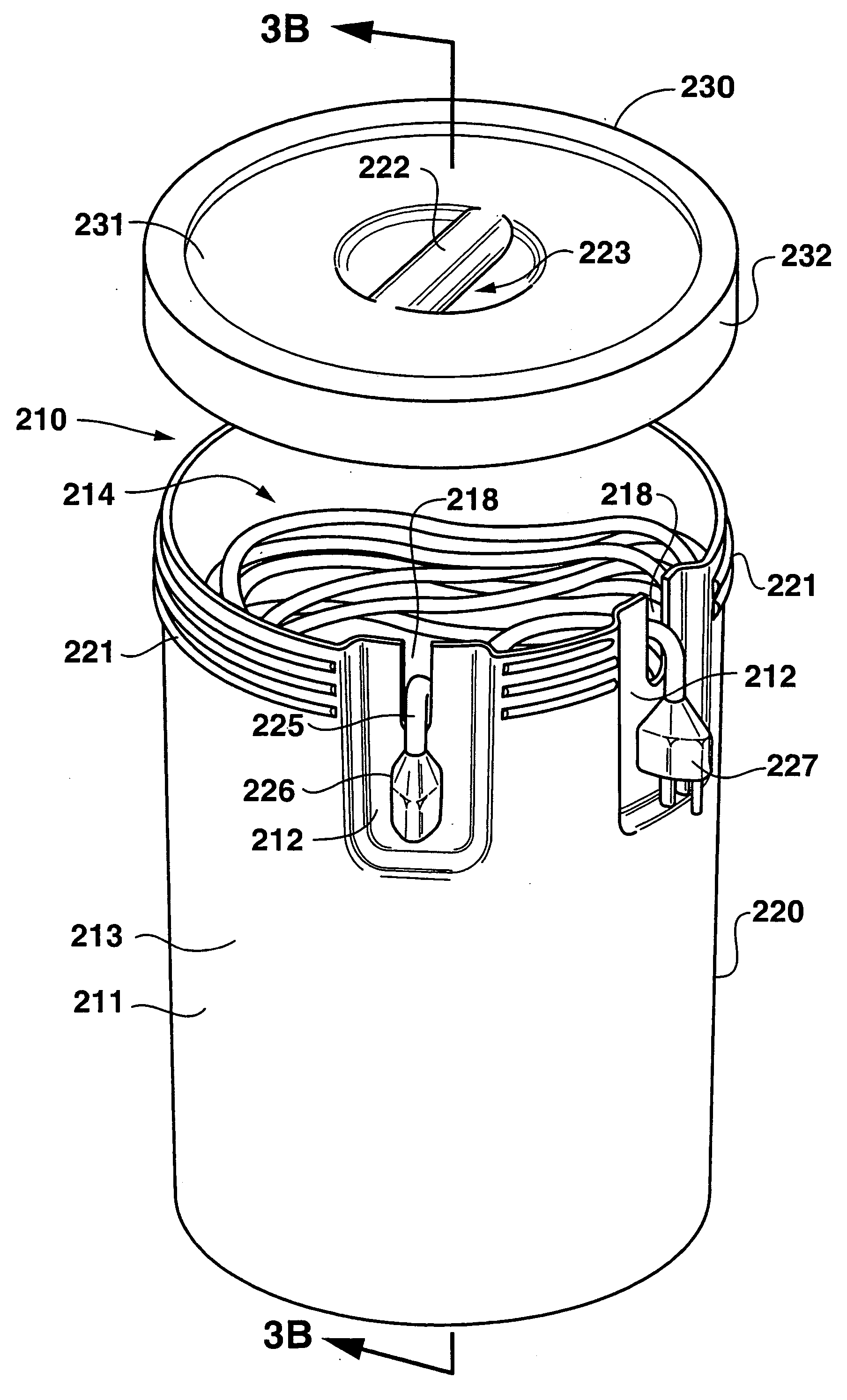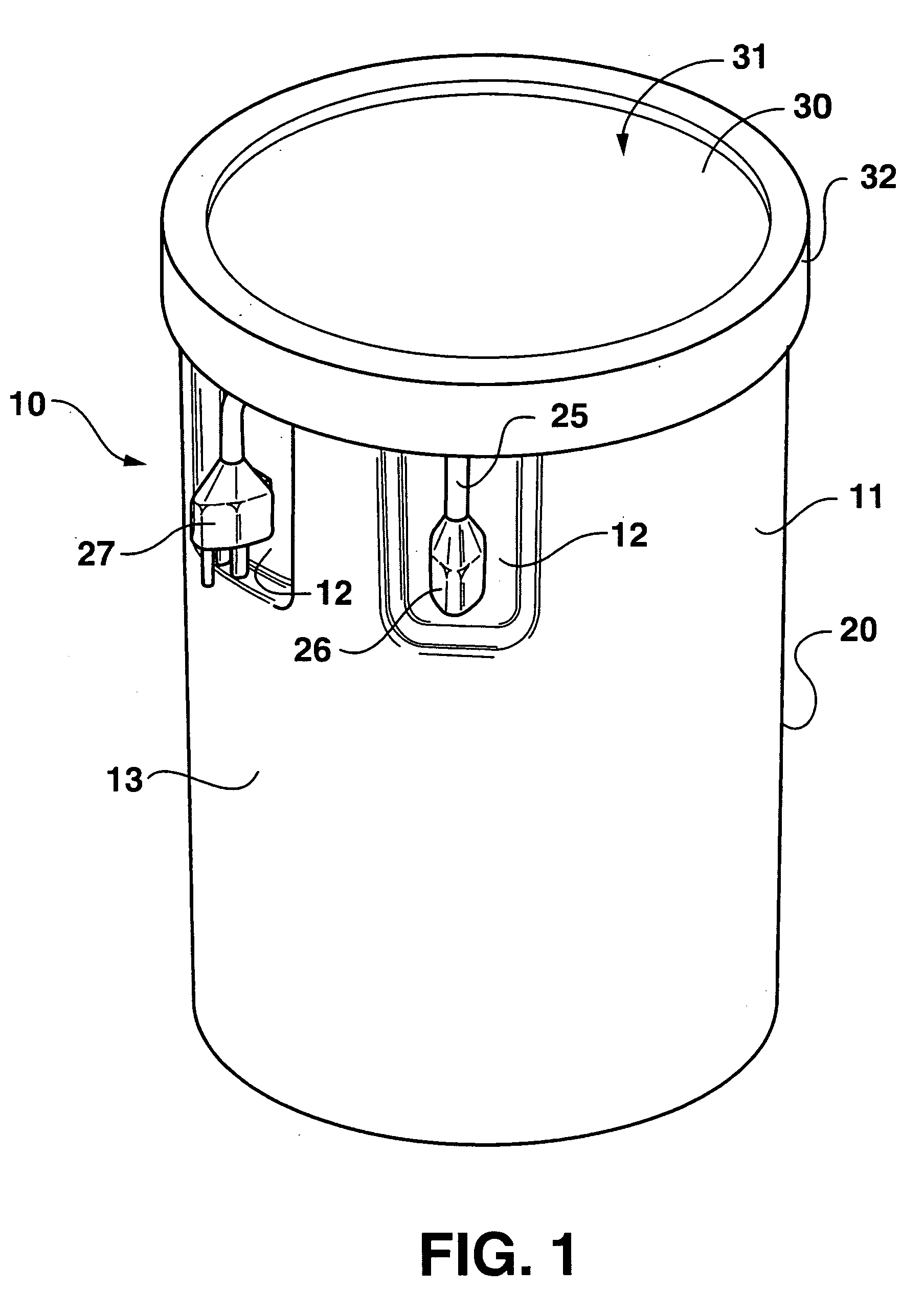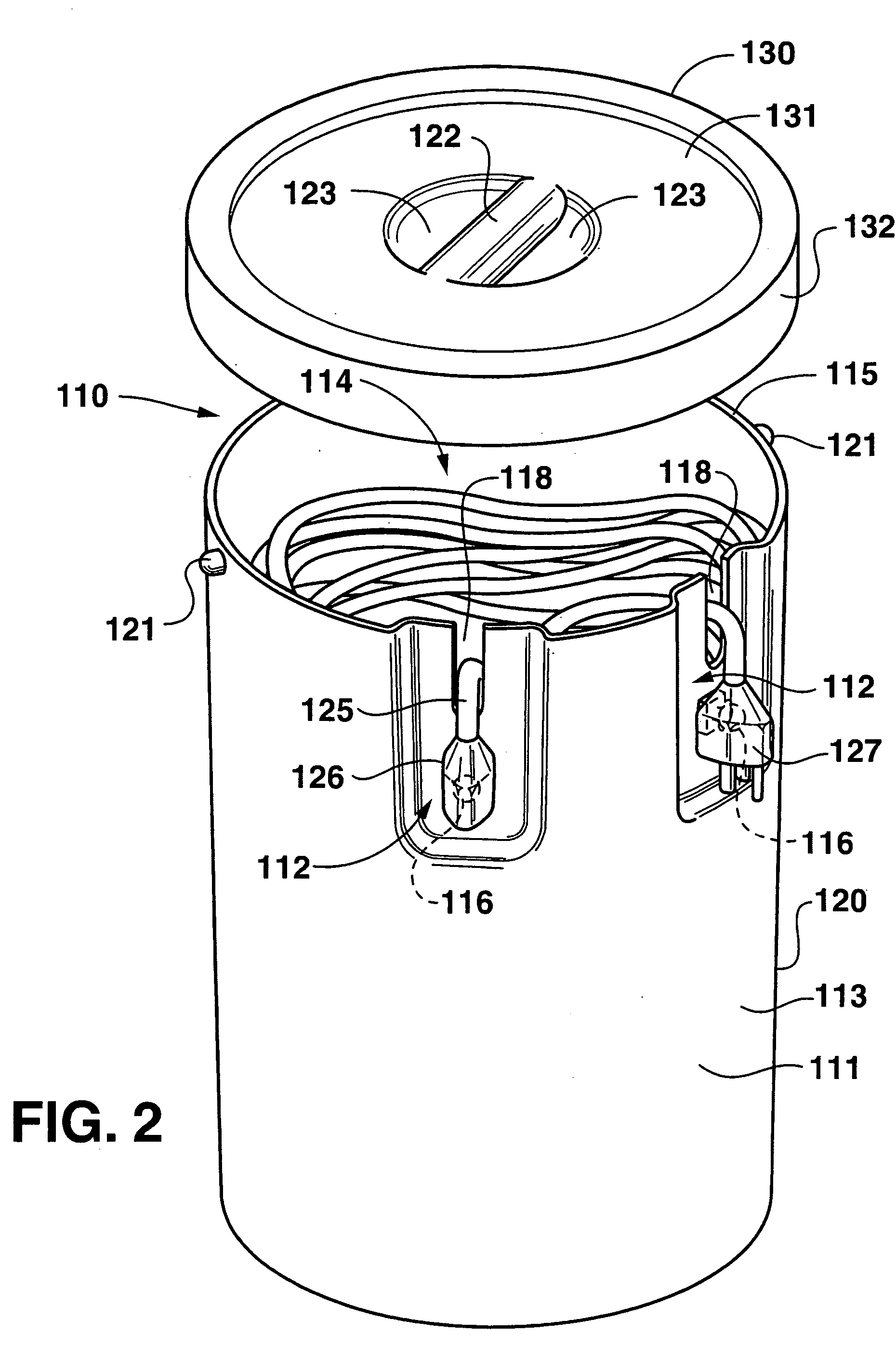Electric extension cord storage device
a technology for storage devices and extension cords, which is applied in the directions of transportation and packaging, coupling device connections, tray containers, etc., can solve the problems of repeated storage and retrieval of extension cords, time-consuming and labor-intensive methods, and cords are difficult to handl
- Summary
- Abstract
- Description
- Claims
- Application Information
AI Technical Summary
Benefits of technology
Problems solved by technology
Method used
Image
Examples
Embodiment Construction
[0035] Reference will now be made in detail to the presently preferred embodiments of the invention, one or more examples of which are shown in the figures. Each example is provided to explain the invention and not as a limitation of the invention. In fact, features illustrated or described as part of one embodiment can be used with another embodiments to yield still a further embodiment. It is intended that the present invention cover such modifications and variations.
[0036]FIG. 1 shows a storage device, generally 10, including a rigid container 20 and a lid 30. The storage device is for housing an electrical cord 25 within the confines of the container 20. The container 20 includes sidewalls 11 that form an outer perimeter 13 of the container 20. These sidewalls 11 form indentions 12 in the outer perimeter 13 that are proximal to an opening in the container 20. The basic shape of the container 20, shown in a cylindrical shape by way of example only, may be any shape that holds th...
PUM
 Login to View More
Login to View More Abstract
Description
Claims
Application Information
 Login to View More
Login to View More - R&D
- Intellectual Property
- Life Sciences
- Materials
- Tech Scout
- Unparalleled Data Quality
- Higher Quality Content
- 60% Fewer Hallucinations
Browse by: Latest US Patents, China's latest patents, Technical Efficacy Thesaurus, Application Domain, Technology Topic, Popular Technical Reports.
© 2025 PatSnap. All rights reserved.Legal|Privacy policy|Modern Slavery Act Transparency Statement|Sitemap|About US| Contact US: help@patsnap.com



